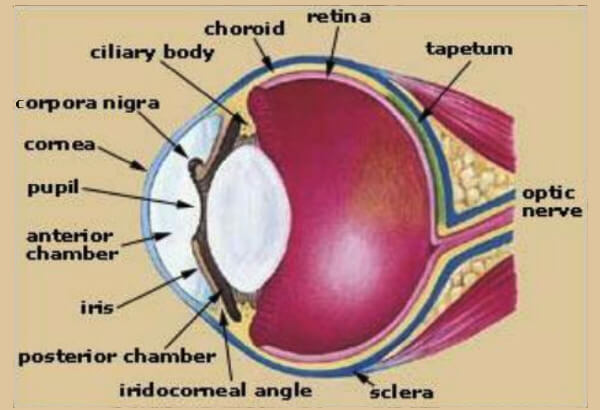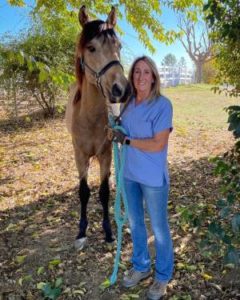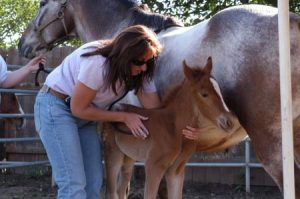
MONOCULAR VISION

Horses evolved as a prey species with large eyes-the largest of any mammal-set to either side of the head (predator species have eyes set in front of the face). This arrangement gives a horse a wide field of view-up to 350°-with a range of focusing abilities. He has blind spots directly behind and in front of his head, and the relatively narrow range of sharply focused, binocular vision is to the front and down the angle of a horse’s head toward his muzzle. This is why he lifts his head to look carefully at something in front of him. A horse’s eye does not have strong ciliary muscles to focus the lens, which is another reason he will move his head to bring an object into better focus.
In the horse’s peripheral field of view, where information comes from only one eye, the focus is less sharp but very sensitive to motion, a prey-species adaptation that makes some horses behavior seem “spooky:’ A horse’s large, oval pupil and the reflective tapetum behind the retina gives him relatively good night vision. Tissue attached to the top of the iris (corpora nigra) might act to shade the eye on bright days, and a yellowish lens might help block glare. He has limited color vision, but does see blue, green, and yellow shades. “

















